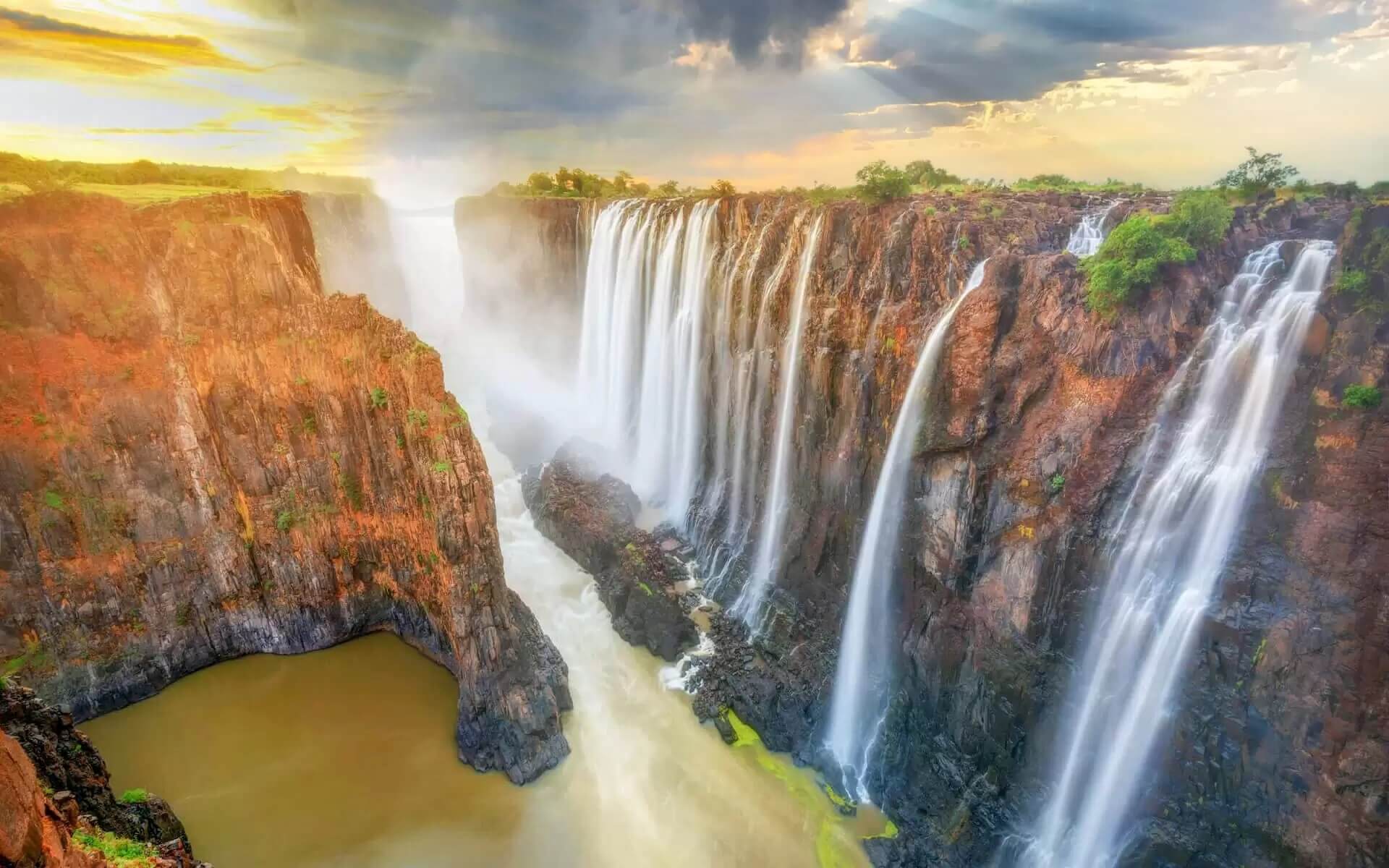Zambia is a landlocked nation in southern Africa with a tropical climate. It is mainly made up of vast plateaus with some hills and mountains, with river basins cutting through it. It is the world’s 39th biggest nation, slightly smaller than Chile, with 752,614 km2 (290,586 sq mi). The nation is mainly located between 8° and 18° South latitude and 22° and 34° East longitude.
Zambia is drained by two main river basins: the Zambezi/Kafue basin in the center, west, and south, which covers about three-quarters of the nation, and the Congo basin in the north, which covers approximately one-quarter of the country. The internal drainage basin of Lake Rukwa in Tanzania covers a relatively small region in the northeast.
The Kabompo, Lungwebungu, Kafue, Luangwa, and the Zambezi itself, which flows through Zambia in the west and forms its southern boundary with Namibia, Botswana, and Zimbabwe, are just a few of the main rivers that run through the Zambezi basin. Its source is in Zambia, but it flows into Angola, where many of its tributaries originate in the central highlands of the country. Zambia’s southern border is formed by the margin of the Cuando River floodplain (not its main channel), which supplies relatively little water to the Zambezi through the Chobe River due to evaporation.
The Kafue and the Luangwa, two of the Zambezi’s longest and biggest tributaries, flow mostly in Zambia. Their confluences with the Zambezi are at Chirundu and Luangwa town, respectively, on the Zimbabwean border. The Luangwa River forms part of Zambia’s boundary with Mozambique before its confluence. The Zambezi River exits Zambia at Luangwa town and flows into Mozambique, finally entering the Mozambique Channel.
The Zambezi flows into Lake Kariba after falling approximately 100 meters (328 feet) over the 1.6 km (0.99 mi) broad Victoria Falls in the country’s south-west corner. The Zambezi valley, which runs along Zambia’s southern border, is deep and broad. It is a rift valley that runs east from Lake Kariba and is created by grabens, similar to the Luangwa, Mweru-Luapula, Mweru-wa-Ntipa, and Lake Tanganyika valleys.
Zambia’s north is mostly flat, with wide plains. The Barotse Floodplain on the Zambezi, which floods from December to June, trailing behind the yearly rainy season, is the most noteworthy in the west (typically November to April). The flood has taken over the natural environment, as well as the lives, societies, and cultures of the residents of the floodplains and other minor floodplains throughout the nation.
The plateau between the Zambezi and Lake Tanganyika basins in Eastern Zambia is inclined uphill to the north, and therefore rises gradually from approximately 900 m (2,953 ft) in the south to 1,200 m (3,937 ft) in the center, reaching 1,800 m (5,906 ft) near Mbala in the north. The World Wildlife Fund has classified these plateau regions in northern Zambia as part of the Central Zambezian Miombo woodlands ecoregion.
Eastern Zambia is a diverse region. The Luangwa Valley divides the plateau in a north-east-to-south-west arc, with the Lunsemfwa River’s deep valley extending west into the plateau’s core. Some parts of the valley are bordered by hills and mountains, most notably the Nyika Plateau (2,200 m or 7,218 ft) on the Malawi border, which continue into Zambia as the Mafinga Hills, which include the country’s highest peak, Mafinga Central (2,339 m or 7,674 ft).
The Muchinga Mountains, which serve as a watershed between the Zambezi and Congo drainage basins, run parallel to the Luangwa River’s wide valley and provide a stark backdrop to its northern border, although being nearly entirely below 1,700 meters (5,577 ft). Mumpu, the highest point in Zambia away from the eastern border area, is located in the western end and stands at 1,892 meters (6,207 feet). The Congo Pedicle’s boundary was established around this peak.
The Congo River’s southernmost headstream originates in Zambia and flows west through the country’s northern region, first as the Chambeshi and then, following the Bangweulu Swamps, as the Luapula, which forms part of the DRC’s border. The Luapula River runs south, then west, before turning north to reach Lake Mweru. The Kalungwishi River, which flows into the lake from the east, is another significant tributary. The Luvua River flows from Lake Mweru’s northern end to the Lualaba River (Upper Congo River).
The other main hydrographic feature in the Congo basin is Lake Tanganyika. The Kalambo River, which forms part of Zambia’s border with Tanzania, supplies water to its south-eastern end. The Kalambo Falls, Africa’s second tallest continuous waterfall, is located along this river.


